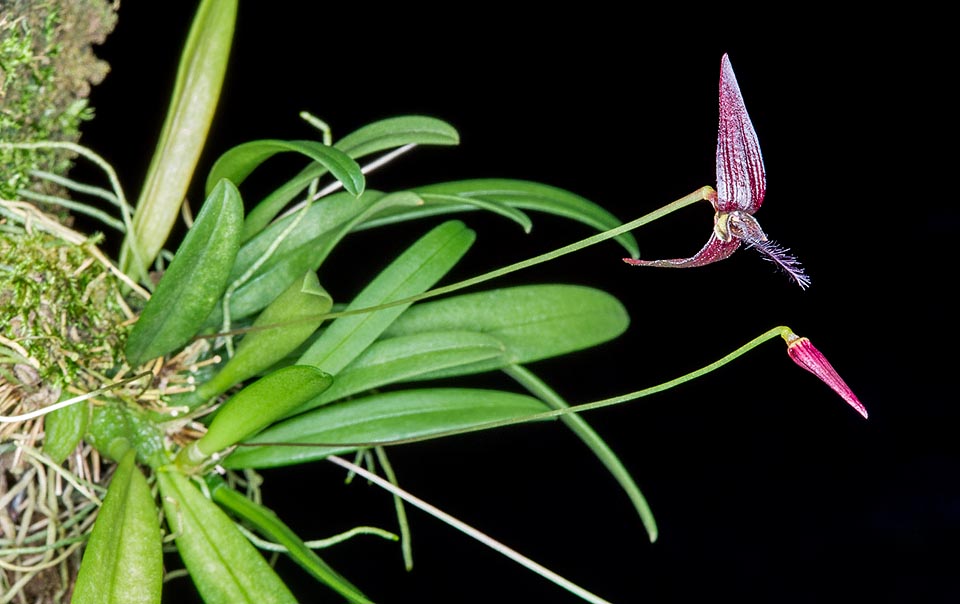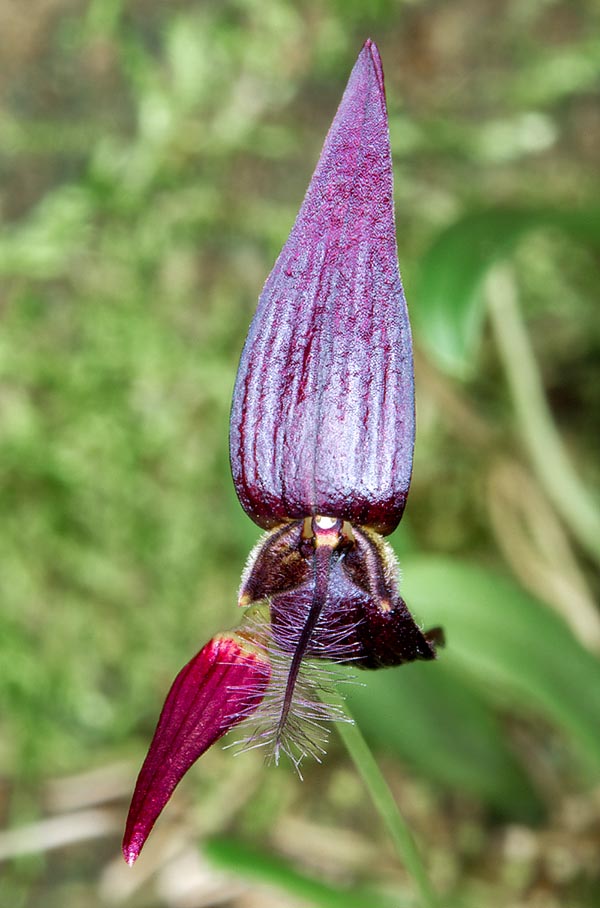Family : Orchidaceae

Text © Pietro Puccio

English translation by Mario Beltramini
The species is native to the Moluccas and New Guinea where it lives on the trees of the humid forests at low altitudes.
The name of the genus is the combination of the Greek substantives “βολβός” (bolbos) = bulb and “φύλλον” (phyllon) = leaf, with reference to the leaves that grow at the apex of the pseudobulbs; the specific name is the combination of the Latin adjective “linearis, e” = linear and of the substantive “labium, ii” = lip, with reference to the labellum.

Epiphyte with creeping rhizome of Moluccas and New Guinea, the Bulbophyllum linearialbum is an unusual miniature orchid © Giuseppe Mazza

Abundant small flowers from the linear labellum, as stated by the scientific name © Giuseppe Mazza
Oblong-ovate dorsal sepal with acuminate apex, 1,1 cm long and 0,35 cm broad, lateral sepals united up to the apex to form a synsepal about 1 cm long and 0,4 cm broad, ovate petals with acute apex, pubescent, 3 mm long and 2 mm broad, linear mobile labellum, ciliate, 6,5-8 mm long, and 1,5 mm long column.
Miniature orchid with characteristic flowers produced abundantly and for most of the year, requires a partial shade, intermediate temperatures, 20-30 °C, with lowest winter night temperatures preferably not under the 16 °C, high humidity, 70-80%, and air in constant movement.
Frequent waterings and nebulizations with high temperatures, slightly more reduced with averagely low temperatures, in order to allow the substratum to partially dry up, utilizing rain water, demineralized or by reverse osmosis.
Monthly fertilizations with a product specific for orchids or a hydrosoluble balanced one, with microelements, at 1/5 the dosage shown on the package.
It can be mounted on small trunks or rafts covered by a layer of sphagnum, or placed in pots or baskets with a compost formed by fragments of medium sliced bark, sphagnum and inerts to improve the drainage.
Repottings and divisions are to be done when strictly necessary upon the vegetative regrowth.
The species is reported in the appendix II of the CITES (species whose trade is internationally ruled).
Synonyms: Bulbophyllum arachnoideum Schltr. (1913); Bulbophyllum bivalve J.J.Sm. (1926); Bulbophyllum heliophilum J.J.Sm. (1929); Diphyes arachnoidea (Schltr.) Szlach. & Rutk. (2008).
→ For general notions about ORCHIDACEAE please click here.
